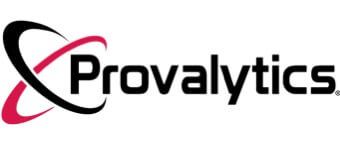Multi-Touch Attribution: A Key Concept in Modern Marketing
Multi-touch attribution (MTA) is a marketing model that evaluates the effectiveness of each touchpoint in a customer’s journey, assigning value to all interactions that contribute to a conversion. Unlike single-touch attribution, which credits only the first or last interaction, MTA provides a more comprehensive view of the customer experience, offering valuable insights into the impact of various marketing channels. There are several attribution models, including linear, U-shaped, and time decay, each distributing credit differently across touchpoints. By using MTA, marketers can identify which channels and strategies drive the most value, leading to more informed decisions and optimized marketing spend. However, implementing MTA can be complex due to the need for accurate data collection and analysis, requiring advanced tools and expertise. Despite the challenges, MTA helps businesses allocate resources more efficiently, ultimately improving overall marketing performance and campaign effectiveness. It’s a powerful tool for refining marketing strategies and maximizing ROI.
Platforms utilize various attribution models to assign credit to multiple touchpoints along the customer journey that contribute to a conversion. Attribution is a marketing concept where each interaction, or “touchpoint,” between a potential customer and a company—such as viewing an advertisement or clicking a link to a website—is evaluated for its role in influencing the final decision. This approach provides a more comprehensive understanding of how different marketing efforts work together to drive conversions.
🚀 Yes, I Want The 2026 Playbook!
Different platforms use various attribution models, which refer to how credit is assigned to various touchpoints. For example, Facebook’s attribution methodology is first and only touch, which means that the platform only considers the final touchpoint before conversion to be responsible for driving that conversion. Google Ads, on the other hand, provides a variety of attribution models, including first touch, last touch, position-based, and time decay.

Attribution Models and Windows: Understanding the Basics
Platforms, in addition to attribution models, have attribution windows, which indicate how long after exposure to an ad conversion will be considered to be generated by the ad. For example, Facebook’s default attribution window is one day view and 28 days click, which means that if a person sees an ad and converts within 24 hours or clicks an ad and converts within 28 days, Facebook will credit the conversion.
Choosing the Right Approach for Your Business
When a company runs campaigns across multiple channels, multi-touch attribution becomes especially important. In such circumstances, it can be difficult to attribute credit to a specific touchpoint because users are likely to contact many channels before converting. For example, a user may see a prospecting ad on Facebook, then look for the company on Google Ads and be retargeted with an ad on the Google Display Network.
Multi-touch attribution techniques include linear attribution, time decay attribution, and position-based attribution. Linear attribution gives equal weight to each touchpoint along the customer journey, whereas time decay attribution gives more weight to touchpoints closer to the conversion. The first and last touchpoints receive the most credit in position-based attribution, with the remaining credit spread evenly across the touchpoints in between.
Multi-touch attribution is an important component of modern marketing. Businesses may acquire a better picture of which channels are driving conversions and optimize their marketing efforts by allocating credit to the many touchpoints along the consumer journey. There are several techniques of multi-touch attribution, each with its own set of benefits and drawbacks, and organizations must select the one that best meets their objectives. Ultimately, the goal is to give customers with a consistent experience across all channels while driving conversions as efficiently as possible.
Why is multi-touch attribution important?
Multi-touch attribution is important because it helps businesses to gain insights into which channels are driving conversions and optimize their marketing efforts by allocating credit to the many touchpoints along the consumer journey. By doing so, they can give customers a consistent experience across all channels while driving conversions as efficiently as possible.
What are attribution models?
Attribution models are used by platforms to determine how credit is assigned to various touchpoints. Different platforms use different attribution models, including first touch, last touch, position-based, and time decay.
What are attribution windows?
Attribution windows refer to how long after exposure to an ad a conversion will be considered to be generated by the ad. Different platforms have different attribution windows, and businesses need to understand these windows to allocate credit accurately to the right touchpoints.
What are some multi-touch attribution techniques?
Some multi-touch attribution techniques include linear attribution, time decay attribution, and position-based attribution. Linear attribution gives equal weight to each touchpoint along the customer journey, whereas time decay attribution gives more weight to touchpoints closer to the conversion. The first and last touchpoints receive the most credit in position-based attribution, with the remaining credit spread evenly across the touchpoints in between.

